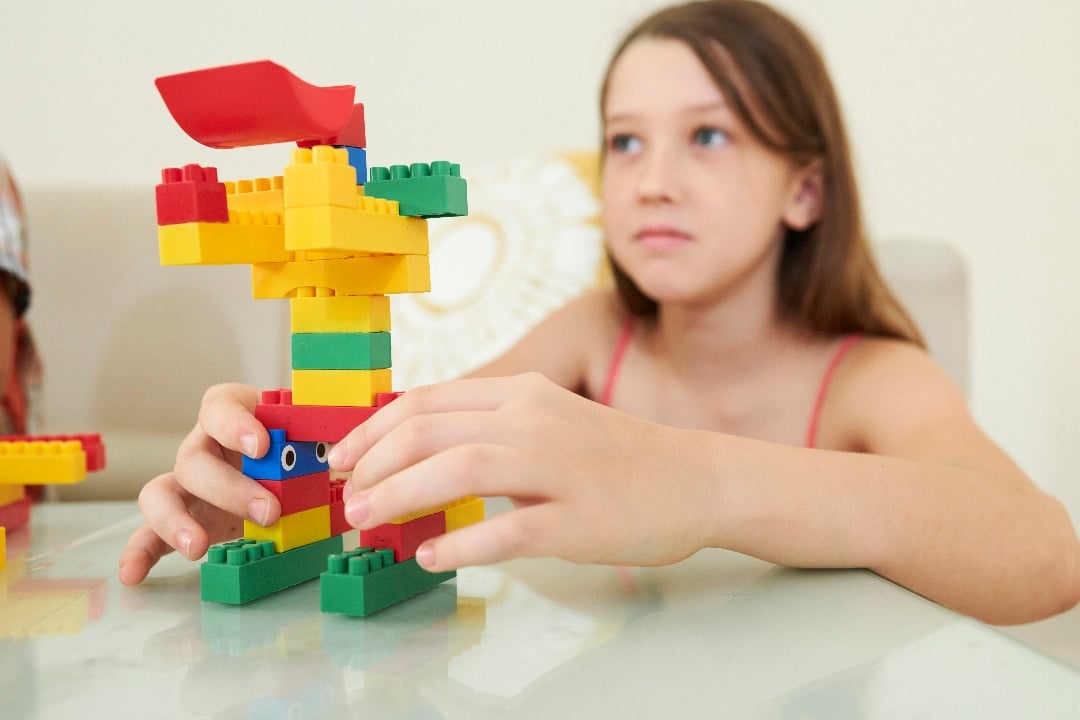
What is spatial reasoning? Why is it important?
Spatial thinking skills include the ability to imagine objects and to change or transform that visualization in order to solve problems (Lohman, 1996). We use spatial thinking in our everyday lives when we arrange our suitcases into the car trunk, when deciding how to cut a tray of brownies into a certain number of pieces, or when trying to imagine how to arrange our furniture to maximize our living space. It is also important to achievement in science and mathematics.
Scientists and engineers often solve problems by visualizing objects in space or by using drawings and schematics to demonstrate new innovations. Einstein famously imagined riding or chasing a beam of light to solve problems related to his General Theory of Relativity. A less well known example is Rosalind Franklin, an expert in x-ray crystallography, whose photos of crystallized DNA led to the discovery of the double helix structure of DNA (the discovery for which others received credit). Very relevant to today, she also contributed to research on viruses, helping scientists to visualize the structure of RNA and the important implications structure has for virus functioning.

Why is spatial thinking overlooked?
Despite its importance for scientific contributions - not to mention careers in engineering, architecture, or visual arts - spatial thinking skills are mostly overlooked in K-12 education. One key reason for this is that reading and mathematics are heavily emphasized by standardized testing. Since many schools are opting out of statewide testing this year, it gives us an unusual opportunity to emphasize talent development more broadly. Why not explore with your children or students?
“We have an unusual opportunity to emphasize talent development more broadly.”
Three tips for spatial thinking activities students can do on their own:
-
Emphasize creativity, not following assembly instructions
Many people who learn about spatial thinking skills think immediately of Minecraft and other video games requiring 3D navigation. These aren’t a bad way to engage students’ spatial thinking, but some evidence suggests that real life building experiences are more effective.
Others may think of LEGO® kits and assume those will build spatial thinking skills. Evidence from training experiences suggests that free building (i.e., not using an assembly guide) builds spatial thinking skills more than following instructions.
Focus on having students set goals for their building that requires problem solving, rather than a specific shape as a goal. Can they build a bridge at least three feet long? Can they build a tower more than 4 feet high that can support a small weight? Who can use the fewest blocks to meet these goals?
Related: Tallest Tower Teamwork Activity, with LEGO Bricks
https://www.oercommons.org/authoring/10576-tallest-tower-teamwork-activity-with-lego-bricks/view
-
Encourage planning before building and prototyping
Speaking of design challenges, research also indicates that having students design and plan their solution before they actually start building can increase the quality of the designs they develop. Once they build a design, students should also think about it as a “prototype” rather than a finished product. This means they should test and refine their design through an iterative process. This is the heart of the Engineering Design Process.
Related: Grades K-2 Engineering Design
https://ngss.nsta.org/k-2-engineering-design.aspx
-
Use more spatial language
Finally, and especially for younger kids (under age 10), try to use spatial language in talking to your children about the world around them or about something they are building.
A team of researchers created a game where they show students a 3D space and describe (or ask students to describe) the location of “Misty” (a pixelated cloud). Look around your home and describe the location of various objects using the spatial concepts listed below. It’s like playing “I Spy” using spatial terms as clues instead of color.

If you want to try some problems that look more like traditional standardized test questions, a team of Australian researchers has made their measure of spatial thinking skills (targeted to middle school students) publicly available. There are also numerous puzzle books that challenge spatial thinking skills with paper-and-pencil activities.
Click here to learn more about CogAT!






